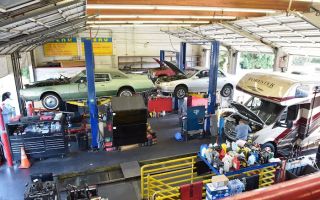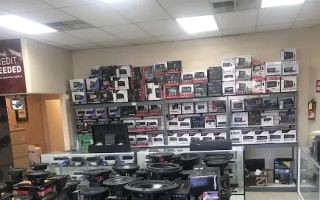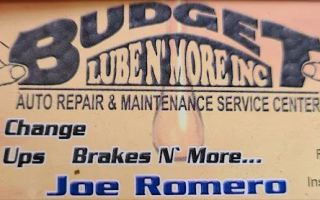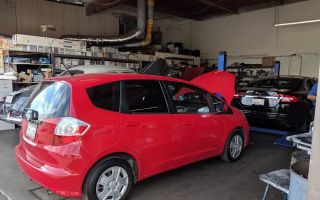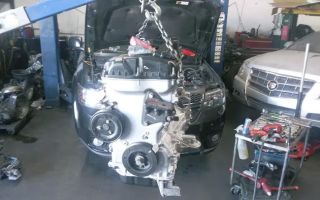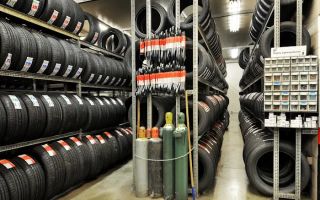How to Fix a Leaking Fuel Line: A Step-by-Step Guide for Drivers
- 1. Identifying a Leaking Fuel Line
- 2. What Causes Fuel Line Leaks?
- 3. Tools and Materials Needed to Fix a Fuel Line Leak
- 4. Step-by-Step Instructions to Fix a Leaking Fuel Line
- 5. When to Call a Professional for Help
- 6. Preventing Future Fuel Line Leaks
1. Identifying a Leaking Fuel Line
Fuel line leaks can be a significant issue for any vehicle. The fuel system is essential for the proper functioning of your engine, and even small leaks can pose serious safety risks, including the risk of fire. So, how do you know if you have a leaking fuel line?
The most common signs of a leaking fuel line include:
- Strong smell of gasoline around the vehicle
- Visible wet spots on the ground beneath your car
- Engine misfire or difficulty starting the car
- Warning lights on the dashboard indicating a fuel system issue
If you notice any of these signs, it's crucial to inspect the fuel system. If you're unsure, you may want to take the car to a mechanic or even call for roadside assistance to ensure safety.
2. What Causes Fuel Line Leaks?
Fuel line leaks typically occur due to wear and tear over time. Your car's fuel lines are exposed to various harsh elements, such as high heat, chemicals, and vibrations, which can weaken them. Some common causes of fuel line leaks include:
- Corrosion: Over time, moisture and chemicals can corrode the metal in your fuel lines, leading to leaks.
- Physical Damage: Rocks, debris, or accidents can cause damage to fuel lines, leading to cracks or punctures.
- Age: As fuel lines age, the rubber parts may dry out, crack, or become brittle, which increases the risk of leaks.
- Improper Installation: If the fuel lines were not properly installed, they could rub against other components and develop leaks.
Understanding these causes can help you identify and prevent potential issues before they turn into serious problems. However, if you notice any fuel leakage, it’s best to take action immediately.
3. Tools and Materials Needed to Fix a Fuel Line Leak
Before starting the repair, make sure you have all the necessary tools and materials. Here’s a list of what you’ll need to fix a leaking fuel line:
- Replacement fuel line or hose
- Fuel line cutter or hacksaw
- Clamps to secure the new line
- Wrenches or pliers
- Fuel line repair kit (if the damage is minor)
- Protective gloves
- Fire extinguisher (for safety reasons)
- Rags or paper towels for cleaning
Having the right tools ensures that the repair process is straightforward and safe. If you’re not confident in your ability to complete the repair, it’s always best to consult with a professional mechanic.
4. Step-by-Step Instructions to Fix a Leaking Fuel Line
Follow these steps carefully to fix a leaking fuel line:
- Safety First: Always ensure your vehicle is parked in a well-ventilated area, away from any sources of heat or fire. Turn off the engine and disconnect the car battery.
- Locate the Leak: Find the source of the fuel leak by inspecting the fuel lines carefully. Look for any cracks, punctures, or wet spots where fuel is escaping.
- Prepare the Fuel Line: If the leak is near a connection, you can try using a fuel line repair kit to patch it up temporarily. For a more permanent fix, use a replacement fuel line or hose.
- Remove the Damaged Line: Use a fuel line cutter or hacksaw to remove the damaged portion of the line. Be sure to clean up any fuel residue and ensure the new line will fit snugly.
- Install the New Fuel Line: Place the new fuel line in the same position as the old one, and use clamps to secure it tightly. Ensure there are no kinks or bends in the line.
- Check for Leaks: After the new fuel line is installed, reconnect the battery and turn on the engine. Carefully check for any signs of leaks. If there’s no leakage, the repair is complete.
It’s important to test the repair thoroughly to ensure your safety. If you’re unsure about the repair process, don’t hesitate to contact a professional.
5. When to Call a Professional for Help
While fixing a leaking fuel line can be a DIY job, there are certain situations where it’s best to call in a professional:
- If you’re unable to locate the source of the leak
- If the leak is located in a hard-to-reach area of the vehicle
- If you lack the proper tools or experience to perform the repair
- If you’re not comfortable working with fuel, which can be dangerous
In these cases, a professional mechanic can help safely and efficiently fix the issue. They can also ensure that all safety standards are met during the repair process.
6. Preventing Future Fuel Line Leaks
Prevention is always better than cure. To prevent future fuel line leaks, here are a few tips:
- Regularly inspect your fuel lines for signs of wear, corrosion, or damage.
- Avoid over-tightening clamps or connectors, which can cause damage over time.
- Use high-quality fuel lines and components during repairs or replacements.
- Ensure your vehicle is parked in a safe area away from debris or potential damage.
By staying proactive, you can reduce the risk of leaks and keep your vehicle running smoothly. If you need assistance with any automotive issues, don't hesitate to contact a reliable towing or mechanic service like Rescue & Towing.
If you have a leaking fuel line or need roadside assistance, you can rely on Rescue & Towing for quick and efficient service. Whether you need help with a fuel line issue or any other car troubles, we’re here to assist you!

